Everyday choices: Ken Dooley, what makes a building smart?
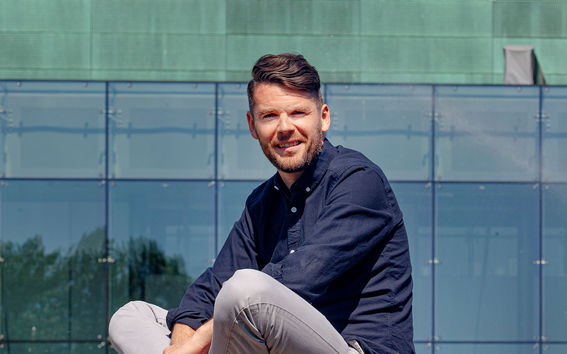
What’s wrong with how we imagine smart buildings?
We usually imagine science fiction things, like somebody walking down the corridor and the light following them – the kind of building that reacts around you. That’s often quite expensive and overly complicated.
Service design has changed smart buildings. Now we think about people’s journeys and about pinch points. We want smart buildings to be friction-free and to solve problems that really annoy people, like finding an important colleague or a free phone booth. Instead of only obsessing about air quality when it isn’t really a problem in well-designed buildings or overly complicated engineering solutions, we’re now asking what a building would be like if you just told people information that they really care about. For example, when the queue to the lunch restaurant is shorter.
So your approach is basically people-first instead of tech-first?
Yes, the idea is to find the issues that are frustrating people and figure out how to solve them. The perspective is more of a lean innovation approach – experiment and validate –almost like an entrepreneurial mindset and a service design mindset.
A big part of that is helping people find and use spaces that meet their needs such as trying to find a phone booth to attend a Teams call or an ad hoc room to spontaneously collaborate with a colleague. And with simple tools like anonymous presence sensors, we can show people when those spaces are free in real-time and we can follow how those spaces are used and adjust to demand.
How does that difference in perspective change things?
It brings convenience into the picture. When we think about smart buildings from a sustainability and wellbeing angle, it becomes about behavioural change, about making the more sustainable or healthier choice convenient and easy.
But if really you want a smart building to be more sustainable or healthy, that opens lots of questions, like how do people get there, how much do they move about and what kind of food do they eat? The building is no longer a big enough level of analysis, and the focus stretches to a wider scale, to neighbourhoods or the city.
Some of the stuff that we’re really proud of has been using technology as an enabler for things that we call hyper-local services. For example, it’s taking an empty commercial space in a neighbourhood, putting a smart lock on it, and then putting in a simple service like tool sharing or coworking. The key is to keep the technology simple and focus on convenience. The second you start to make it more complicated and you need the technology to do something more, the whole thing changes. Convenience in this case means easy to use by the citizens who live in the neighbourhood and easy for startups to build simple and inexpensive software that interacts with the smart locks.
How did you find your way to this mindset?
When I started working in sustainability consulting and design, I found that the conversation was often just about best practice, doing things a bit better than last week. If felt very incremental.
I was inspired by some of the things that startups were doing, combining emerging technologies with behavioural understanding. The engineering lens is very much a ‘rational actor’ view, but everyone isn’t always walking around with a rational brain having the best day of their life.
I had to learn to look at the same problem with a different lens. If we want people to make sustainable choices, then we need to make them easier. What would be the seamless story or journey or experience? What would encourage people to step outside their norm and try something new? If we want to stop people from buying a ladder or drill that they only use once or twice a year then we have to offer high quality shared versions of them that are nearby, easy to hear about, easy to access 24/7 and are inexpensive.
Hammering on people and blackmailing them with a polar bear on a floating piece of ice hasn’t been working. So I realised that we have to look at making the right choice easier. Make it convenient, make it attractive. Make it aspirational.
This article has been published in the Aalto University Magazine issue 33, September 2023. The Everyday choices column presents research topics from the perspective of our experts' everyday life. Kenneth Dooley has started his fixed-term period of 5 years as Professor of Practice in December 2022 at Aalto University's Department of Electrical Engineering and Automation. The field of the professorship is smart building technologies and
services.
Text: Sedeer el-Showk
Photo: Nita Vera
Smart Building Technologies and Services
The aim of the group is to advance research and teaching within smart buildings.
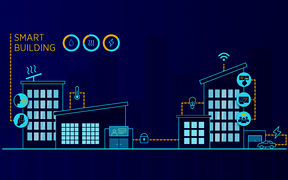
- Published:
- Updated:
Read more news
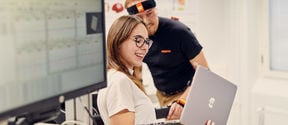
Health Technology Engineering equips students to create innovative technical solutions to health challenges
New Master’s programme combines engineering knowledge with practical understanding of health-related issues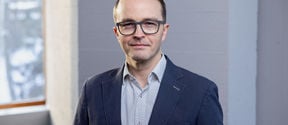
Get to know us: Assistant Professor Ville Miikkulainen
Miikkulainen most recently worked as University Lecturer at Aalto University.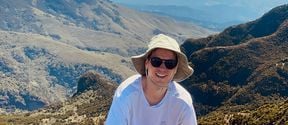
Alum Anton Jantunen 'In my role, analytical skills, a comprehensive understanding of complex concepts, and the ability to see connections are especially useful.'
Anton Jantunen's journey led him from major consulting firms and startups to working in Nairobi at the UN Sanitation and Hygiene Fund, which aims to improve access to safe sanitation, hygiene, and menstrual health products and services. Jantunen works with innovative financing models for the fund.